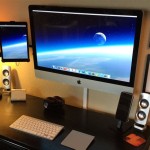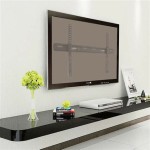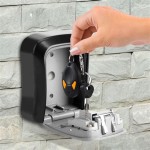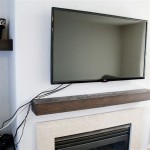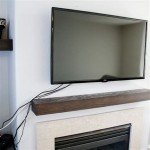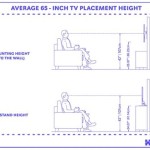Corner TV Wall Mount for 85 Inch Screens: A Comprehensive Guide
The installation of a large screen television, particularly an 85-inch model, presents unique challenges regarding space efficiency and viewing angles. A corner TV wall mount offers a practical solution for optimizing both in environments where conventional wall placement is not feasible or ideal. This article provides a comprehensive overview of corner TV wall mounts designed for 85-inch televisions, covering key considerations, types of mounts, installation processes, and potential issues.
Corner placement can be advantageous for several reasons. Firstly, it maximizes viewing distance in smaller rooms by allowing the television to be positioned further away from seating areas. Secondly, it can free up valuable wall space for other furniture or decorative elements. Thirdly, it can improve viewing angles from multiple locations within a room, providing a more immersive entertainment experience. However, successful implementation hinges on selecting the appropriate mount and ensuring proper installation.
Understanding the Requirements for an 85-Inch TV Corner Mount
Before purchasing a corner TV wall mount for an 85-inch television, it is crucial to understand the specific requirements associated with such a large display. The primary considerations revolve around weight capacity, VESA compatibility, and the structural integrity of the corner walls.
Weight Capacity: 85-inch televisions are significantly heavier than smaller models. Therefore, the wall mount must have a sufficient weight capacity to safely support the television without risk of failure. The manufacturer's specifications for the television should be consulted to determine its exact weight. The chosen mount should have a weight rating that exceeds the television's weight by a comfortable margin, typically at least 20%. This provides a safety buffer and accounts for any potential dynamic loads that may occur during movement or adjustments.
VESA Compatibility: VESA (Video Electronics Standards Association) standards define the hole pattern on the back of televisions used for mounting. The corner TV wall mount must be compatible with the television's VESA pattern. Common VESA sizes for 85-inch televisions include 400x400mm, 600x400mm, and 800x400mm. The product description for the wall mount should clearly state the VESA patterns it supports. If the television's VESA pattern is not directly supported by the mount, VESA adapters can be used, but these add complexity and should be considered carefully.
Wall Structure: Corner walls are frequently constructed using different methods than standard flat walls. It is essential to ascertain the type of wall construction in the corner, which may include standard drywall over wood studs, concrete, or brick. The mounting hardware and installation techniques will vary depending on the wall type. For drywall and wood stud walls, it is imperative to anchor the mount securely to the studs, which provide the necessary structural support. Stud finders can be used to locate the studs accurately. Concrete and brick walls require specialized anchors designed for these materials, along with the appropriate drilling equipment.
Corner Angle: The angle of the corner itself can influence the type of mount required. Most corner mounts are designed for standard 90-degree corners. However, some corners may have irregular angles due to architectural features or construction variations. In such cases, adjustable or custom-made mounts may be necessary to ensure proper alignment and stability.
Types of Corner TV Wall Mounts for Large Screens
Various types of corner TV wall mounts are available, each offering unique features and suitability for different applications. The selection process should be based on factors such as desired viewing flexibility, aesthetic preferences, and budget constraints.
Fixed Corner Mounts: These are the simplest and most economical type of corner TV wall mount. They hold the television in a fixed position with minimal movement. Fixed mounts are suitable for situations where the viewing angle is consistent and does not require adjustment. They are typically easy to install and offer a low-profile design that keeps the television close to the wall.
Tilting Corner Mounts: Tilting mounts allow the television to be tilted vertically, which can help to reduce glare from overhead lighting or improve viewing angles from lower seating positions. The tilting range is typically limited to a few degrees, but this can be sufficient to address minor viewing angle issues. Tilting mounts are slightly more complex than fixed mounts but still relatively straightforward to install.
Full-Motion Corner Mounts: Also known as articulating mounts, full-motion corner mounts offer the greatest viewing flexibility. They allow the television to be extended away from the wall, swiveled horizontally, and tilted vertically. This provides a wide range of viewing angles and allows the television to be adjusted to suit different seating positions or activities. Full-motion mounts are more complex and expensive than fixed or tilting mounts, but they provide the most versatility. They are particularly useful in rooms where the viewing area is not directly in front of the corner.
Cantilever Corner Mounts: A type of full-motion mount, cantilever corner mounts use a single arm extending from the corner plate to support the TV. This design is visually appealing and allows for a wide range of motion. They are well-suited for larger TVs, due to the strong support provided, but can be more challenging to install.
Installation Considerations and Best Practices
Proper installation is paramount to ensure the safety and stability of the 85-inch television and the longevity of the wall mount. The installation process should be approached with careful planning, precision, and adherence to the manufacturer's instructions.
Safety Precautions: Before commencing the installation, it is crucial to take appropriate safety precautions. Disconnect the television from the power outlet and any connected devices. Gather all necessary tools and materials, including a stud finder (if applicable), drill, level, screwdriver, measuring tape, and appropriate mounting hardware. It is highly recommended to have a second person assist with the installation, especially when handling a large and heavy television.
Stud Location and Marking: For drywall over wood stud walls, use a stud finder to locate the studs in the corner. Mark the stud locations clearly on the wall with a pencil. The corner mount should be positioned so that it is securely anchored to at least two studs. If the stud spacing does not align with the mount's mounting holes, a bridging technique may be necessary, involving the use of a wooden board or metal plate to span the studs.
Drilling and Anchor Installation: Once the stud locations are marked, pre-drill pilot holes into the studs at the marked locations. The pilot holes should be slightly smaller than the diameter of the mounting screws. For concrete or brick walls, use a hammer drill to drill holes of the appropriate size for the concrete anchors. Insert the anchors into the holes and tap them gently with a hammer until they are flush with the wall surface.
Mounting the Corner Plate: Align the corner plate of the mount with the pre-drilled holes in the studs or the installed anchors in the concrete/brick wall. Use the appropriate mounting screws or bolts to securely attach the corner plate to the wall. Ensure that the corner plate is level using a level tool. Tighten the screws or bolts firmly, but avoid over-tightening, which could damage the wall or the mount.
Attaching the TV Brackets: Attach the television brackets to the back of the television using the VESA-compatible mounting screws. Ensure that the brackets are securely fastened and aligned properly. Refer to the television's manual for specific instructions on attaching the brackets.
Hanging the Television: With the assistance of a second person, carefully lift the television and align the brackets with the corresponding slots or hooks on the corner plate. Secure the television to the corner plate according to the mount's instructions. Double-check that the television is securely attached and level before releasing it.
Cable Management: After the television is mounted, route the cables (power, HDMI, etc.) neatly along the wall or through cable management channels to conceal them. This will improve the overall aesthetic appearance of the installation and prevent cables from becoming tangled or damaged.
Testing and Adjustments: Once the installation is complete, test the television to ensure that it is functioning properly. Check the viewing angles from different locations in the room and make any necessary adjustments to the mount's tilt, swivel, or extension. Ensure that all screws and bolts are tightened securely.
Troubleshooting Common Issues
Even with careful planning and execution, certain issues may arise during or after the installation of a corner TV wall mount. Understanding these potential problems and their solutions can help to ensure a successful outcome.
Inadequate Weight Capacity: If the wall mount is not rated for the weight of the television, it may sag or fail over time. This can pose a serious safety hazard. Always verify the weight capacity of the mount before installation and choose a mount that exceeds the television's weight by a sufficient margin.
Incorrect Stud Location: If the mount is not anchored securely to the studs, it may not be able to support the weight of the television. Use a stud finder to locate the studs accurately and ensure that the mounting screws are driven directly into the studs.
Incorrect VESA Compatibility: If the mount is not compatible with the television's VESA pattern, the brackets may not align properly. Verify the VESA compatibility of the mount before purchase and use VESA adapters if necessary.
Uneven Mounting: If the corner plate or the television brackets are not level, the television may appear crooked. Use a level tool during installation and make any necessary adjustments to ensure that the mount is level.
Cable Management Issues: Poor cable management can detract from the aesthetic appearance of the installation. Use cable management channels or ties to conceal the cables and keep them organized.
Limited Range of Motion: If the full-motion mount has a limited range of motion, it may not provide the desired viewing flexibility. Choose a mount with a sufficient range of motion for the specific application.
Wall Damage: Over-tightening screws or using inappropriate mounting hardware can damage the wall. Use the appropriate mounting hardware for the wall type and avoid over-tightening the screws.

Unho Universal Tilt Swivel Articulating Corner Tv Wall Mount Bracket 22 85 Inch

Unho Universal Tilt Swivel Articulating Corner Tv Wall Mount Bracket 22 85 Inch

Mount It Full Motion Corner Tv Wall Extending Arm For 20 In To 55 Screen Size Mi 4471 The Home

Emerald Full Motion Wall Mount For 32 In 85 Tvs 8904 Sm 720 The Home
Unho 2356 Double Arm Tilt Swivel Tv Wall Mount Bracket With Spirit Level

Solid Tilting Tv Wall Bracket Cantilever Corner Mount Dual Arm 32 65 Lcd Plasma

Mount It Full Motion Corner Tv Wall Extending Arm For 20 In To 55 Screen Size Mi 4471 The Home

The 4 Best Tv Wall Mounts Of 2025 Reviews By Wirecutter

Kanto Fmc1 Telescoping Corner Tv Mount For 40 Inch To 60 Tvs

Mount It Full Motion Corner Tv Wall Extending Arm For 20 In To 55 Screen Size Mi 4471 The Home

